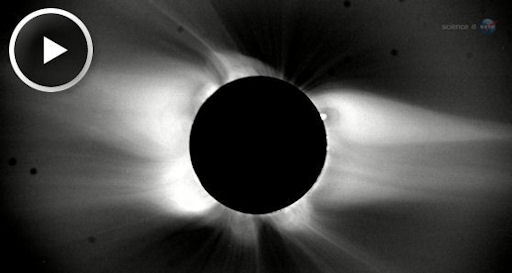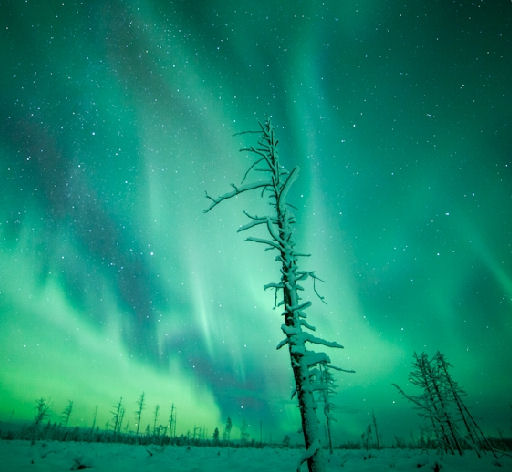Thirty-five new items have just been added to our Meteorite Jewelry collection. Browse the Space Weather Store for something out of this world. | | |
CME IMPACT: An interplanetary shock wave (probably the leading edge of a CME) hit Earth's magnetic field on Nov. 12th at approximately 2300 UT. NOAA forecasters estimate a 55% chance of polar geomagnetic storms. Aurora alerts: text, voice.
TOTAL ECLIPSE OF THE SUN: The staff of spaceweather.com are in Australia this week to witness a total eclipse of the sun on Nov. 13/14. The path of totality cuts right across Port Douglas and Cairns, Qld--a.k.a. the "Gateway to the Great Barrier Reef." People on cruise ships, divers in the reef, and thousands of people standing along beaches of the Coral Sea will witness the early morning sun disappear behind the Moon for more than two minutes. It's going to look something like this:

The only cloud on the horizon is ... well ... clouds. Residents are hoping that the gray skies they have been seeing in recent mornings will turn blue before the big moment arrives. Totality begins on Wednesday, Nov. 14th, at 06:38 am local time in northeast Australia (the afternoon of Nov. 13th in the USA) with the rising sun just 14 degrees above the horizon.
Spaceweather.com author Dr. Tony Phillips will be running the Solar Eclipse Marathon, which begins at 3rd contact when the first ray of sunlight lances over the limb of the retreating Moon. Race organizers say its "the first marathon with an intergalactic starting gun." Actually, it's the first marathon with a rubber chicken. Phillips' running mate in the race will be the fowl Camilla, who is incorporating the 26 mile run into her astronaut training.
Stay tuned for photos and updates from the path of totality.
INCOMING CMES: A pair of minor CMEs is heading for Earth. They were launched on Nov. 9th and 10th, respectively, and are expected to merge into a single cloud before they reach our planet on Nov. 12th. NOAA forecasters estimate a 55% chance of polar geomagnetic storms in the next 24 hours. Aurora alerts: text, voice.
Consider this a preview of the coming display. On Nov. 7th, a minor solar wind stream hit Earth's magnetic field, sparking Northern Lights over Muonio, Finland:

"The whole sky was on fire," says photographer Antti Pietikäinen. "It was one of the best displays of the year in the Finnish Lapland"
Realtime Aurora Photo Gallery
Realtime Space Weather Photo Gallery
Realtime Noctilucent Cloud Photo Gallery
[previous years: 2003, 2004, 2005, 2006, 2007, 2008, 2009, 2011]
Potentially Hazardous Asteroids (
PHAs) are space rocks larger than approximately 100m that can come closer to Earth than 0.05 AU. None of the known PHAs is on a collision course with our planet, although astronomers are finding
new ones all the time.
On November 12, 2012 there were 1349 potentially hazardous asteroids.
Notes: LD means "Lunar Distance." 1 LD = 384,401 km, the distance between Earth and the Moon. 1 LD also equals 0.00256 AU. MAG is the visual magnitude of the asteroid on the date of closest approach. | | The official U.S. government space weather bureau |
| | The first place to look for information about sundogs, pillars, rainbows and related phenomena. |
| | Researchers call it a "Hubble for the sun." SDO is the most advanced solar observatory ever. |
| | 3D views of the sun from NASA's Solar and Terrestrial Relations Observatory |
| | Realtime and archival images of the Sun from SOHO. |
| | from the NOAA Space Environment Center |
| | the underlying science of space weather |

